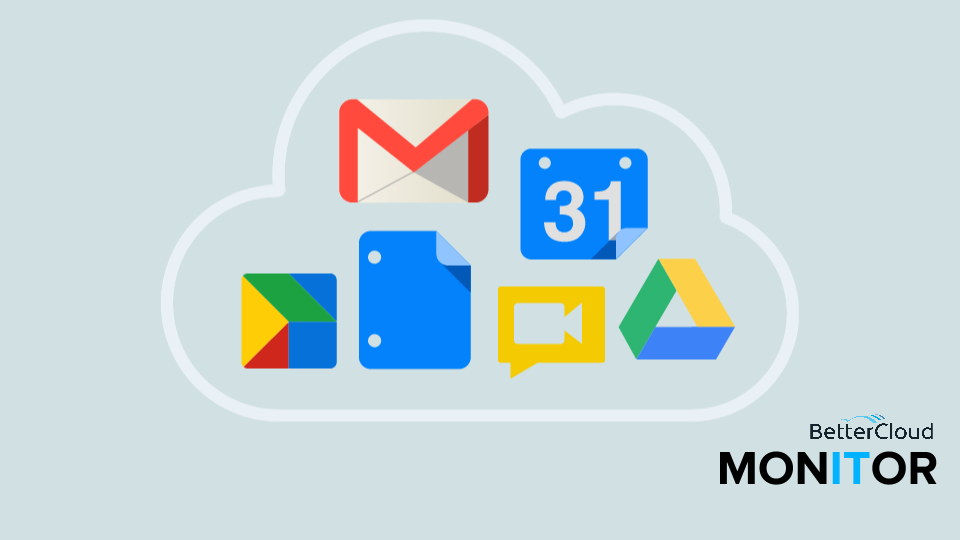Top 5 Google Apps Updates Released in the Last 5 Months
October 23, 2012
4 minute read

If you’re a Google Apps user or administrator, you know by now that Google rolls out new features and product updates on a constant basis. Keeping up with these updates can be overwhelming, and you might be missing out on new tools and features that could add efficiency to your day or save time in the long run. To get you up to speed, here are the top five new Google Apps updates released in the past five months.
1. Reseller API for Google Apps for Business, Drive and Vault
Google’s ‘Reseller API,’ released at the beginning of October, helps Google Apps resellers scale their businesses by allowing them to integrate and automate components of pre-existing reseller tools into a their unique customer support and sales systems. Resellers who want to take advantage of these new APIs must first configure their reseller console to “Post Paid.” Once put in place, these integrations makes managing dozens of disparate domains much easier, and for the end-user, support and access to Google Apps is now far more streamlined.
Using the newest API, resellers can add new customer accounts, transfer accounts and view customer subscription information all without entering Google’s reseller tools.
2. Gmail Advanced Labs Management
Also this month, Google released an update many admins have been waiting for: the ability to manage Google Labs for users within your domain. Now with Gmail Advanced Labs Management, domain administrators can control which Google Labs end-users may use and can enforce the enablement or disablement of certain labs.

To manage Labs in Gmail:
- Go to the Google Apps Control Panel (Manage this domain under your Gmail settings, here’s a quick guide)
- Click on Settings on the top right
- Click on Email on the list on the left side
- Then select the new Labs tab
- Select Enable Gmail Labs, which allows users to turn on Labs, or choose Advanced Labs Management, to control a user’s interaction with Labs
If you selected Advanced Labs Management, you now have the ability to allow (anyone in the domain has the option to use the Lab), disable (turn off for everyone in the domain) or enable (push Lab to all users) certain Labs.
For more information on using advanced labs management, check out this Ask the Gooru tutorial video.
3. Google+ Business Tools (and Google+ Events)
Though the strength of Google+ has been question as a consumer social network, it’s been touted widely as an enterprise social tool, and Google added more weight to this argument this summer with the launch of several business tools for Google+ and Google+ Events.
Now, businesses using Google+ with Google Apps have the ability to:
Set Private Sharing
Google+ now allows administrators to set default sharing policies for posts as either restricted or unrestricted, however it is important to note that users will have the option to share the post as restricted or unrestricted before publishing. Restricted posts are only shared within the organization and cannot be re-shared with anyone outside of your domain, easing fears by many organization that users will inadvertently share private information publicly. This update will hopefully allow more organizations to take advantage of Google+. Users now also have the ability to share a post with specific colleagues outside of the company.

Hangout Integration with Gmail, Calendar and Docs
Everyone’s favorite Google+ tool was only integrated with Gmail and Calendars as part of the Google+ business upgrade. Users can now enter a Hangout from directly within their inbox or add a Hangout right to calendar event. Personally, this has made scheduling video conferences far easier.
Plus this July, Google announced a Docs integration with Google+ Hangouts, meaning you can share, view and edit a Doc while in a Hangout, making the process truly collaborative.
Administrative Controls
Finally, and most importantly, Google added new administrative controls to Google+. These tools allow domain admins to set company-wide restrictions for posts and also give administrators the ability to enable private and restricted Hangouts depending on company policy and preference.
4. Google Drive App for Mobile

Google Drive, which launched in April, has quickly become the go-to cloud storage solution for millions of users around the world. The service seamlessly integrates with Google Docs, Sites and Gmail and is an easy way to store your files in the cloud.
After Google released Drive, users immediately requested Drive Apps for Mobile. Google did not disappoint releasing apps for Android, iPhone, iPad and iPod Touch in June. The mobile Apps make accessing documents on the go easier than ever and bring a new meaning to the term “work from anywhere.” You can check out the Drive mobile applications by visiting Google Play or the App Store.
5. Offline Docs Editing
Another highly requested feature, Offline editing for Google Docs was also released in June. The update brings a host of functionality to Google Docs users and squashes arguments from those who claim Google Docs are impractical without an internet connection.
With offline editing, users can view and edit documents and any changes are automatically saved. These changes appear when you’re back online. In order to use this feature, you must first enable Docs Offline. To do so, select More on the left-hand side in Google Drive. Then click Offline Docs. You must then enable Offline Docs and install the Drive App from the Chrome Web Store.





